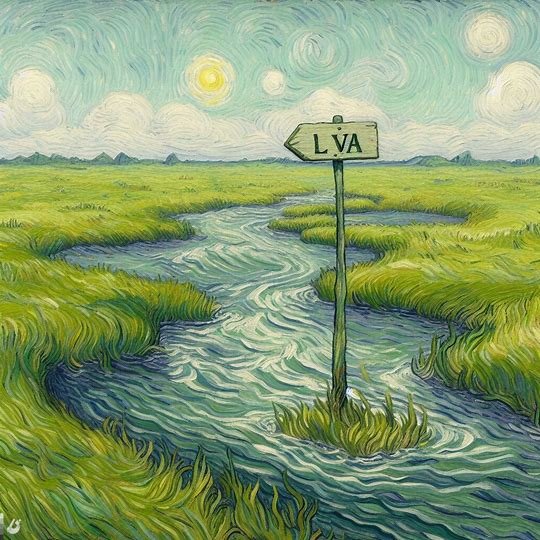Coordinator's reflections:
Wildlife protection and poverty
The valley is marked by grave economic and social problems. Many of these are endemic, because they are conditioned by structural patterns that disadvantage people in the valley (more than 200,000 people) as compared to the rest of Zambia.
Wildlife protection could benefit the local population, if...
The valley is known as a place of wildlife and a place for wildlife. National and international policies have given this role to the valley. Wildlife protection is supposed to benefit the local community:
- through revenues flowing back to support developmental projects (schools, sanitation, etc);
- through jobs that are created in the wildlife industry;
- through opportunities to sell crafts and vegetables to tourists.
This mantra is reproduced on many websites and publications. But if people are benefitting so much (as is claimed), why is it that the population all along the valley (with the exception of those near a tarmac road) have remained among the poorest of Zambia? With very low educational standards? With a very high infant mortality? With high numbers of school dropouts? With high numbers of deaths during child-birth?
Why is the valley plagued year after year by disastrous and endemic hunger?
After more than half a century of repeating the above mantra?
Many safari providers, lodges and charities invest much into the local community, as do faith-based communities: They have built schools and run educational projects. They have provided water (boreholes) to many families, and run agricultural projects. Many provide also entertainment, for example by sponsoring football tournaments. And yet... in spite of all these efforts, let us ask realistically how an area can develop that lacks a road network that functions during the rainy season.
And to ask a second question: Is it maybe true that all these revenues are, all in all, simply substituting government investment in the valley? When the CRB (Community Resource Board) renovates schools with revenues generated through wildlife, does this not facilitate the government to concentrate on other areas outside the valley? So that, when we make our sums, the valley population, compared to populations outside the valley, does actually benefit very little from wildlife protection, while bearing the main costs?
People who bear the costs of wildlife protection
On the plateau, where people live without wild animals, people can have large fields and grow many hectares of crops. In the valley this is not possible. Families, including the children, need to sleep in the fields to protect their crops from elephants, chasing them away with noise and shouting, night after night. They manage to protect only small portions. With a total lack of sleep, night after night, how possibly can children study in school? In many areas, even the few chilli-blasters have been withdrawn for fears that they will turn into poachers (and such fears are very reasonable!) Fences work, but they are quickly removed and benefit only some farmers, not others. Many people are left helpless in their struggle to protect their crops. Some ask if the parks can really feed so many animals, and whether the animals do not need people's fields to survive. Compensation is never paid to farmers when animals destroy their crops, even though these farmers bear the real costs of wildlife protection. Too many have paid the costs with their lives, killed by elephants and buffaloes.
Lack of political will to address the road network situation
The key to development is the road network. Historically, Zambia's major trading routes went through the valley. Michael Sata's plan to connect Chipata to Mpika through the valley (Nabwaya) had raised hopes for people that they are again becoming part of Zambia. But the plans were abandoned. Today, the road network is so pathetic that people live with the awareness that poor roads may actually be politically wanted, to protect wildlife at the expense of human development. A widespread ideology claims that development leads to the increase of the human population, which will lead to a decrease in wildlife. In other words: development should be tuned down so as to discourage the expansion of the human population.
We witness that this approach leads to the opposite effect: Isolation denies people the chance of broadening their income and their education. People fail to make ends meet through agriculture. It leads to social, political, cultural and economic entrenchments. It leads to a grave distortion of the market prices, especially in times of hunger. Malnutrition is pathetic. Children die every week. Or are affected by brain damage and epilepsy after surviving celebral malaria. Ask any average family how many children they have buried! In such a situation, where human life is cheap, how can one talk to people about wildlife protection? We witness that the politics of isolation make some people hate elephants who destroy their crops. Others (rightly!) say that "We have to keep the animals so that others can make the profits!"
Transport prices become exaggerated. A sick person travelling from Lumimba to the nearest hospital in Lumezi pays 300 Kwacha in transport (one way, one person - and more during the rainy season), if one can reach at all. And they cannot travel alone! Who can afford to go to hospital or to take advantage of other services? Or go back to the hospital for review as instructed by the doctors? The isolation has made the valley unattractive for teachers and health-workers. Civil servants fear the valley. Education becomes devalued.
Unfortunately, the lack of development turns people towards poaching. When there is a sick person in the family or a child who wants to go to college, or simply to eat, people look at elephant tusks and the selling of meat as a solution.
Let's be clear: Poaching today is not controlled through the good will of the valley population (which is the only lasting solution to guarantee wildlife protection!), but by brutal force: overly harsh prison sentences, penalties, and a spy system that has eroded the community by paying people who betray their neighbours to the wildlife authorities.
Hunger
The FRA (Food Reserve Agency) reaches only very few places in the valley. All other areas in the valley are left to the market system, which is gravely distorted by the poor road network. In the rainy season, maize costs twice the amount as in the rest of Zambia.
People receive little marketing information and are subjected to radical price shifts that make planning very difficult. For example, in 2022, people received 20 Kwacha for each kg of cotton they produced. In 2023, the price wet down to 6 Kwacha / kg. Since more cotton was grown than maize, granaries were empty already by September, instead of being full. Hunger became the language of the day and led many people to concur large debts, which they need to repay with 100% interest (kaloba). Many people have already sold this year's harvest before even starting to reap. The drought of 2024 makes many people pessimistic in regards to prospects for the future.
Extension of wildlife protection and of forests
The church has always welcomed the protection of natural forests, of animals and wildlife. The church strongly welcomes new initiatives and opportunities to safeguard the unique environment of valley. However, we advocate that such protection goes hand in hand with the local population. If it is enforced from outside through the local elite (who profit) without taking the people on board who pay the costs, it will fail in the long run.
We witness that many people feel overrun by new developments in the valley in regards to the extension of wildlife protection and of forests (carbon credits). They ask questions: What are the future consequences, for them and their children? How can they obtain firewood in the future? Or use poles for constructing houses. Or burn bricks for development projects? Contracts were signed on their behalf that will have lasting impact on the valley. We hope that the new policies will prove to be good and beneficial. The church commits herself in supporting environmental protection - with people, but not against people. As of now, many people are unsure about the consequences for their children. Has the valley been sold out to outside interests?
People are proud and happy about development opportunities that come through wildlife protection and carbon credits. But instead of making the valley more developed than other rural areas (because of the additional revenues), the opposite is clearly the case. Development opportunities in the valley remain far behind other rural areas who do not benefit from carbon credits or from tourism and who do not have wild animals, but who have a proper road network.
Human - animals conflicts
People in the valley know that wildlife is protected, and that wildlife protection comes at a cost. And many people are ready to fulfil their national duty, bear some of its costs, and play their part in protecting the natural heritage of their ancestors: their environment and their animals. But people have legitimate concerns which are not being addressed:
- When people kill an animal, even on their own fields when animals destroy their crops, they are prosecuted. Wildlife authorities move in with cars and weapons to arrest those whom they regard as poachers. Many are imprisoned for many years. But when animals kill people and destroy people's crops, no compensation is given. No cars move in. Why can part of the money that is generated through tourism not be used to compensate those farmers who bear the main costs of wildlife protection?
- Very few people attain salaried jobs in lodges or in the wildlife industry. The best paid people come often from outside the valley, because they could enjoy better education and training facilities. Instead of speaking of a so-called "local community" that benefits from wildlife, we would better speak of individual families who outdo one another in their efforts to secure for themselves a small piece of the small cake of rewards for wildlife protection at the expense of other families. Furthermore, rewards given to people who betray their neighbours as poachers can only have centrifugal consequences that turn one family against another.
Environmental protection must not be cheap!
The Church wants to play a major role in the task of protecting our environment and wildlife. The whole of this year (2024) is dedicated towards the protection of the environment, in all our parishes. Let us realise that wildlife protection comes at a cost, also at an economic cost. Burrying the head in the sand and overlooking the real costs of wildlife protection that is shouldered by the poor will work against the environment. A simple policy like compensating farmers for their losses could help a great deal to bring people more on board.
In the long run, the ideological fears that real infrastructural investments into human life will erode wildlife do not benefit wildlife at all - these fears harm the animals as much as they harm humans.

